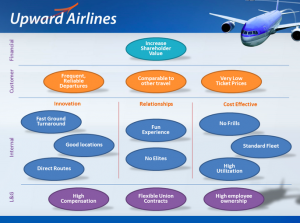— August 16, 2017

geralt / Pixabay
For most marketing teams, the first milestone in converting consumers into customers is successfully contacting them. Yet most brands have a contact rate of less than 50%! The question is why?
If a consumer has taken the time to raise their hand and express genuine interest in your brand then why aren’t you able to contact them at a higher rate?
To answer these questions, let’s start by examining the consumer leads and contacts that you are trying to connect with and convert. Do you know as much as you think you know about these consumers? At the very least, marketers and brands need to get a basic snapshot of data to understand the who, what, where and when of each consumer. The information brands need to make data-driven decisions about who to contact, how to engage with them and when.
How much time has passed since they clicked “submit” on your form?
In today’s microwave society, consumers want and expect instant gratification. Ensuring that your team contacts them shortly after their lead submission is crucial to successfully making contact. With that in mind, you need to know the relative age of a lead – how much time has passed between the time a consumer clicked “submit” and you received their inquiry. This can be the difference between reaching a consumer with high interest in your brand, and reaching (or not reaching) someone who has already been contacted by a competitor, or has already lost interest.
In a recent article on Inc.com titled, “Selling the Impossible“, Mike Eshelman, VP of Marketing at First Direct Lending, shared, “Once a buyer talks with one or two lenders, they don’t want to invest additional time with other companies, even if they could get better rates. That’s why our loan consultants must get there in the shortest time possible.” Currently, at First Direct Lending, speed-to-contact is just 6 seconds.
Is this contact real? Is their intent real?
You have probably optimized your own forms and have a good idea of how long a consumer engages on your site before requesting more information or completing an application. But what about leads that are being generated by third-party vendors?
Generally, time spent on the lead form may be used as a measure of engagement. Contacts who fill out a form quickly may show a low level of intent, or could even represent fraudulent activity. Conversely contacts who spend more time engaging with a lead form show higher intent, and therefore are more likely to accept your call.

The chart above is recent, aggregated data from our customers showing the amount of time consumers spent completing lead forms for insurance quotes. As you can see, the average close rate is higher when a consumer spends more time engaged with the form. We can assume this is a good proxy for contact rate as well, because the more contacts that are made, the more conversions will be achieved.
Knowing this information will give you the intelligence you need to know if a contact is real and what their real intent is. The higher their intent, the more likely you will make contact, and the more likely they are to convert.
Where is this consumer in his or her journey?
Regardless of your industry, there are a finite number of consumers searching for the kind of products and/or services that you provide at any given time. By looking at the in-market activity of a consumer, including how many similar industry sites they have visited, and how many other forms they have filled out, you can better measure their interest level and whether they are close to making a buying decision.
What is this consumer’s recency with related brands? What is the frequency of engagement with related content and brands? And what level engagement are they exhibiting?
The right data will help you answer these questions, and help you accurately gauge where a consumer is on his or her journey and how likely it is that they will want to engage with you.
Do I have the consumer’s consent to contact them? And am I contacting them in the way that he or she has requested?
Regulations such as the Telephone Consumer Protection Act (TCPA), require brands to adhere to a strict set of requirements to protect consumers from unwanted calls or texts. While compliance with these requirements reduces the risk of litigation, the data that you need in order to show proof of consent to be contacted is essential to the success of your engagement. Knowing that a consumer has consented to be contacted by you is an indicator that they want and expect to hear from you.
Also, knowing how and on which device a consumer wants to engage should be a basic element of your contact strategy. Contacting them in the wrong way dramatically reduces your chance of connecting with them, and even further reduces any chance of converting them into a customer.
Evolving lead intelligence into customer intelligence
Having accurate and timely information about individual contacts, as they come into your funnel as leads, is strategically important. This data will enable you to optimize your analytics models and build out an optimized engagement strategy. This will move the needle beyond the 50% contact rate. But that is only the beginning.
To unleash the full power of consumer intent, you should seek to attach the consumer’s intent to every consumer interaction – leads, calls, site visits, etc. Imagine a world where you can understand the consumer’s intent to then engage in the richest, most contextually relevant and valuable engagement possible.
In our digital world, consumers demand content, products and services to be delivered, how, when and where they want it. In order to succeed, we need to find a way to work together to provide this level of engagement and understand what our customers want before, during and after contact and conversion.
This will be a focus of a session that I look forward to hosting at LeadsCon: Connect to Convert. I invite you to share your thoughts and send any questions that you might have around this topic.
Business & Finance Articles on Business 2 Community
(72)
Report Post







